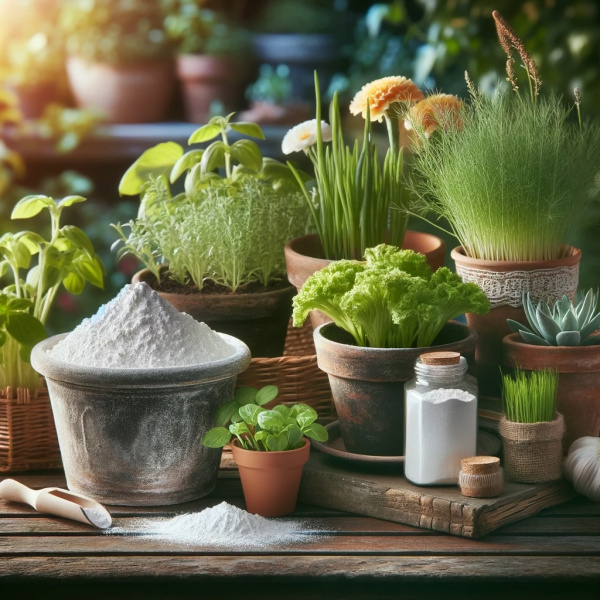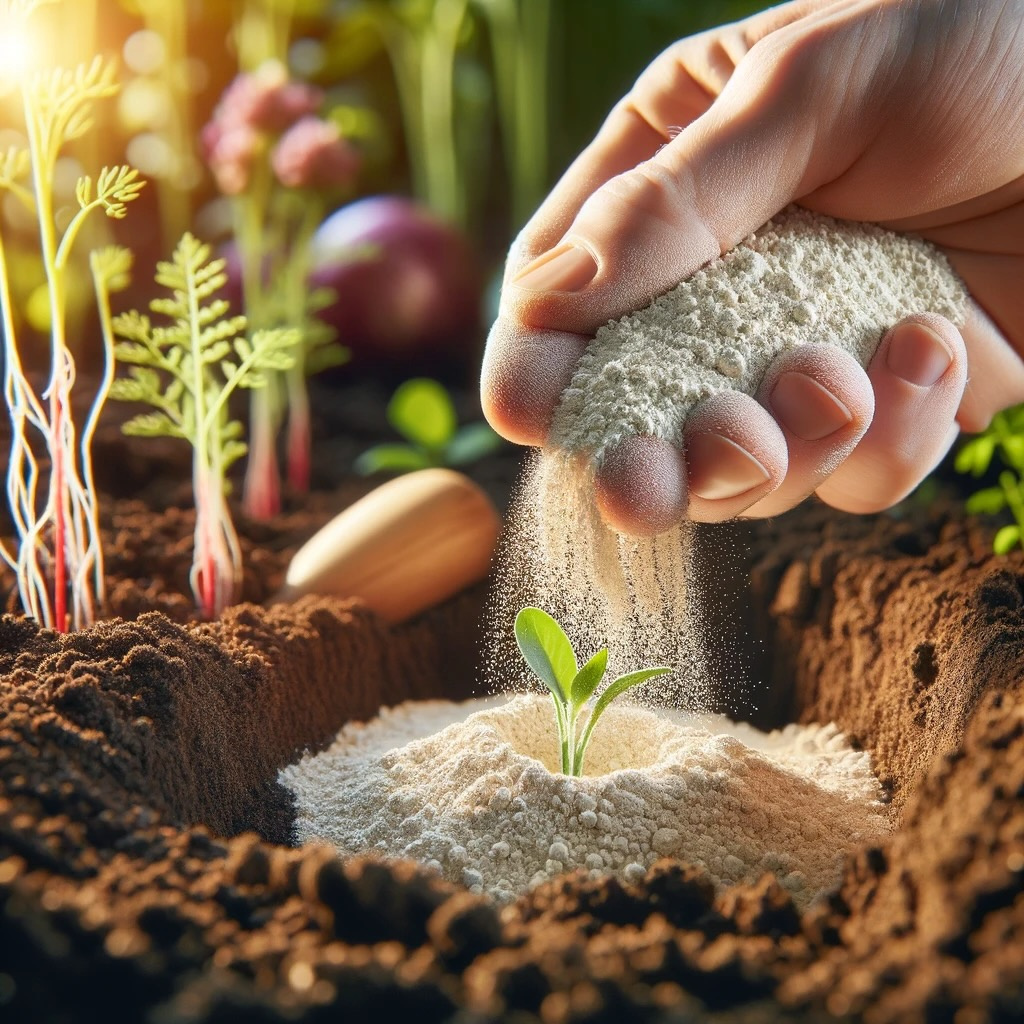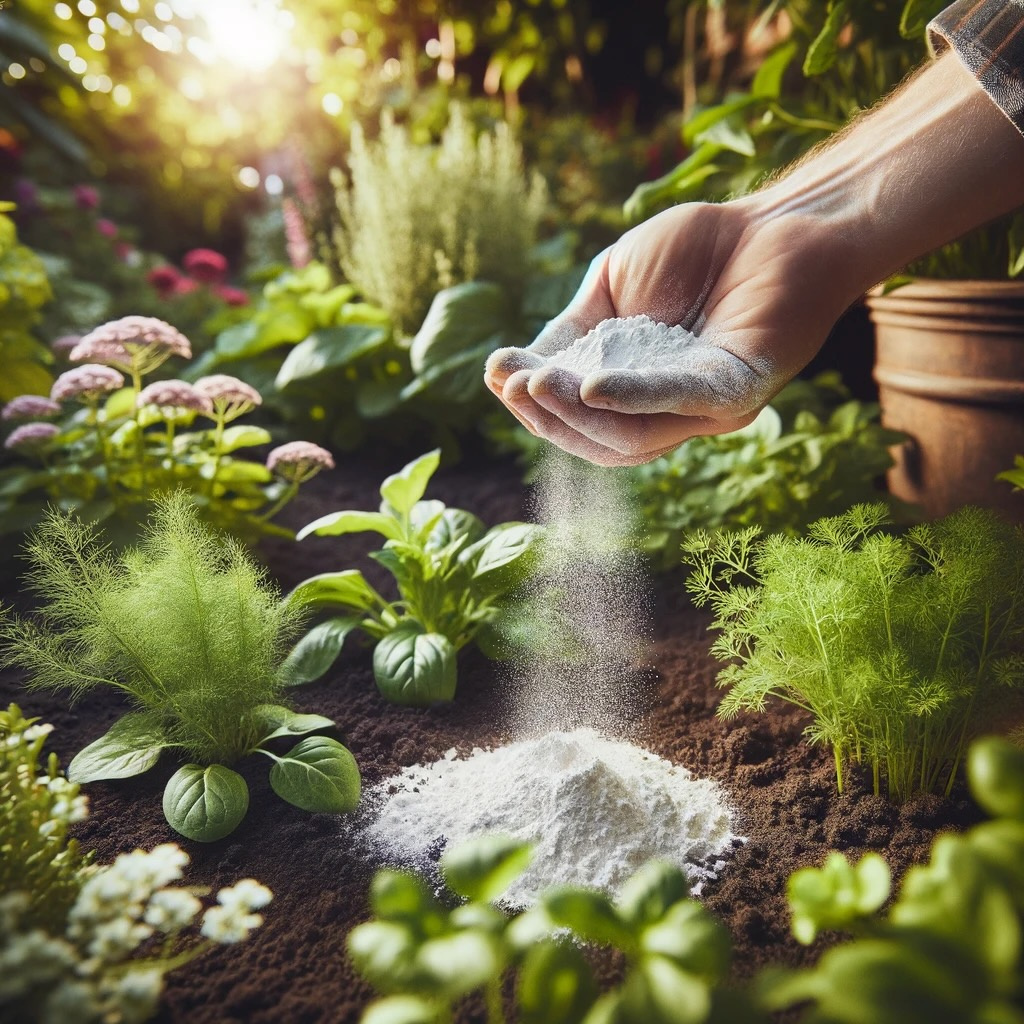
Bone Meal Introduction
Bone meal, made from ground animal bones, is a natural and organic soil amendment that has been used for centuries to enrich garden soil with essential nutrients.
Rich in phosphorus and calcium, bone meal supports robust root development, enhances flowering and fruiting, and aids in the overall vitality of plants.
This guide will explore the myriad benefits of bone meal, its nutritional profile, practical application tips, and its suitability for various plants and soil types, while emphasizing its role in sustainable gardening practices.
Typical NPK Value: 4-12-0 or 2-14-0

Bone Meal Key Benefits
Incorporating bone meal into garden soil offers a host of advantages:
- Phosphorus Boost: Essential for root development, blooming, and fruit production, phosphorus in bone meal is released slowly, providing a long-term nutrient source.
- Calcium Enhancement: Calcium strengthens plant cell walls, contributing to healthy growth and protecting against diseases.
- Soil Improvement: Bone meal helps to improve soil structure and promotes beneficial microbial activity, enhancing soil fertility and plant health.
- Organic Gardening: As a natural product, bone meal is an excellent choice for organic gardening, providing nutrients without the use of synthetic chemicals.

Bone Meal Nutritional Profile
Bone meal is primarily valued for its high phosphorus content, typically ranging from 15% to 27%, and its calcium content, which can vary widely but significantly contributes to plant and soil health.
Unlike synthetic fertilizers, the nutrients in bone meal are released slowly into the soil, ensuring that plants receive a steady supply over time, reducing the risk of nutrient burn and promoting sustainable growth.

How to Use Bone Meal
Applying bone meal to your garden is simple, but it's important to follow best practices:
- For New Plantings: Mix bone meal into the soil at the bottom of planting holes or rows, using about 1 tablespoon per hole for small plants and 2 tablespoons for larger plants.
- For Established Gardens: Apply bone meal to the soil surface around existing plants, using about 1 cup per square yard, and gently incorporate it into the soil without disturbing plant roots. Water thoroughly after application.
- Frequency of Application: Since bone meal releases nutrients slowly, it typically needs to be applied only once or twice a year, ideally in the spring and/or fall.

Ideal Plants and Soil Types
Bone meal is particularly beneficial for flowering plants and bulbs, such as roses, tulips, and daffodils, which have high phosphorus requirements for blooming.
It's also valuable for fruiting vegetables like tomatoes, peppers, and squash, promoting vigorous root development and abundant fruit production.
Bone meal works best in soil with a pH below 7, as alkaline conditions can limit the availability of phosphorus to plants.

Sustainability and Environmental Impact
Using bone meal as a soil amendment supports sustainable gardening practices by recycling animal by-products that might otherwise be wasted.
It provides a natural, slow-release source of essential nutrients, reducing the need for synthetic fertilizers and minimizing nutrient runoff into waterways.
By enhancing soil health and plant resilience, bone meal contributes to the creation of more sustainable and productive garden ecosystems.

Bone Meal Tips and Tricks
To get the most out of bone meal in your garden, keep these tips in mind:
- Test Your Soil: Conduct a soil test before applying bone meal to determine if your soil is deficient in phosphorus and to avoid over-application.
- Combine with Other Amendments: For a more balanced nutrient profile, consider mixing bone meal with other organic amendments like compost or blood meal, which provides nitrogen.
- Store Properly: Keep unused bone meal in a dry, sealed container to prevent it from attracting animals or developing mold.

Bone Meal Conclusion
Bone meal is a valuable resource for gardeners seeking to naturally enhance soil fertility and plant health. Its slow-release nutrients support sustainable growth and development, making it an ideal choice for organic and environmentally conscious gardening practices.
We encourage you to visit our shop and try incorporating bone meal into your gardening routine. Together, we can grow healthier plants and contribute to a more sustainable world.


